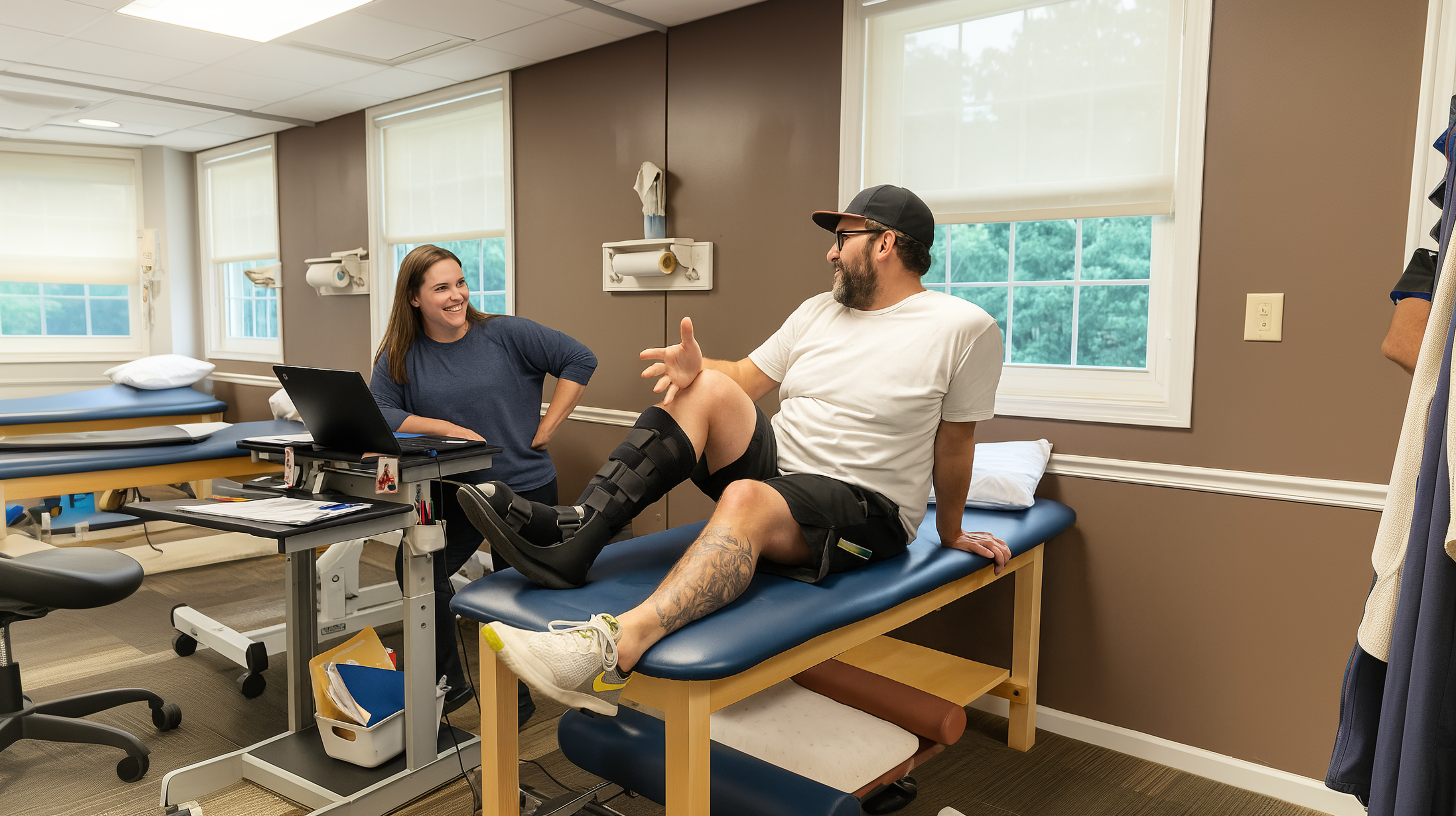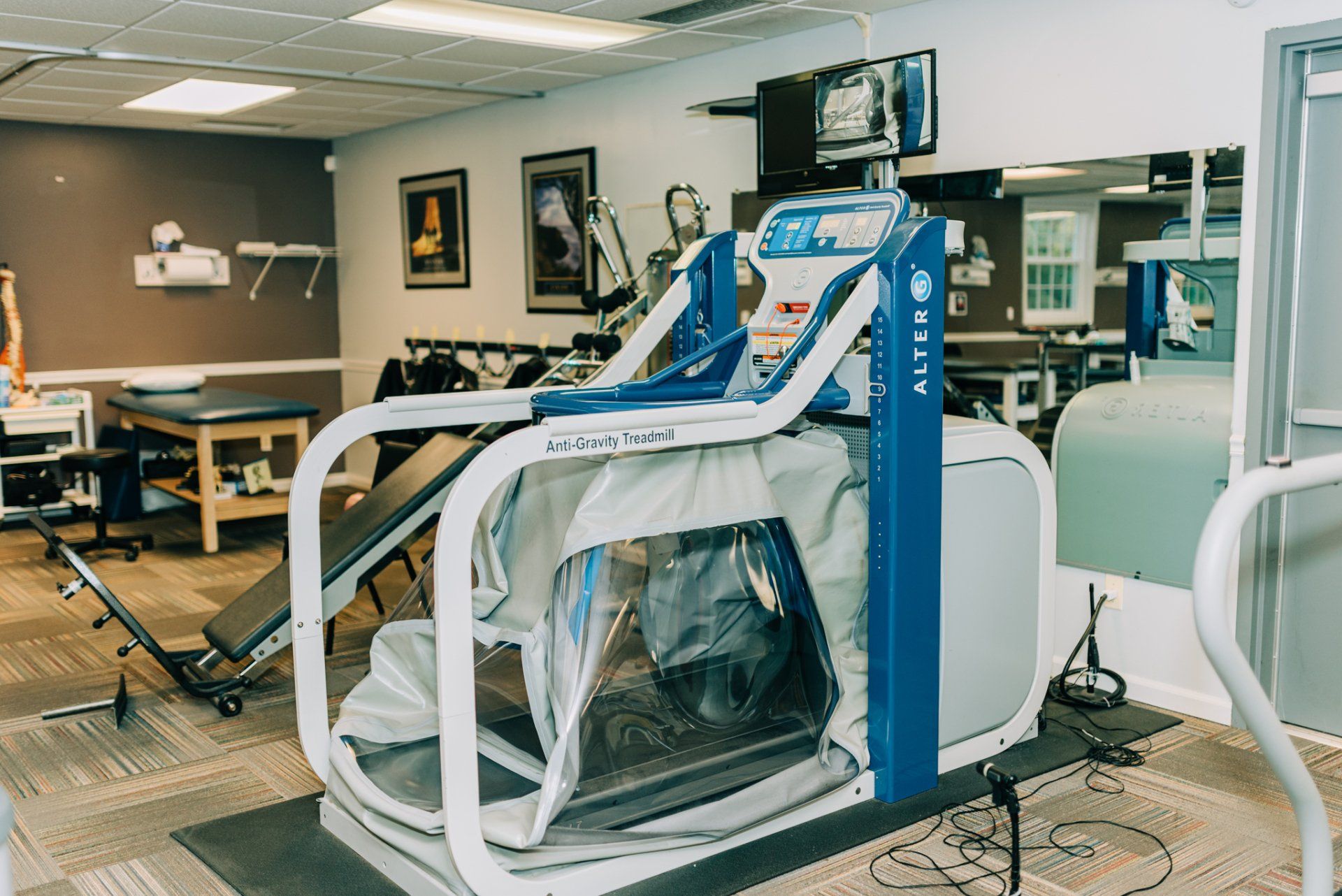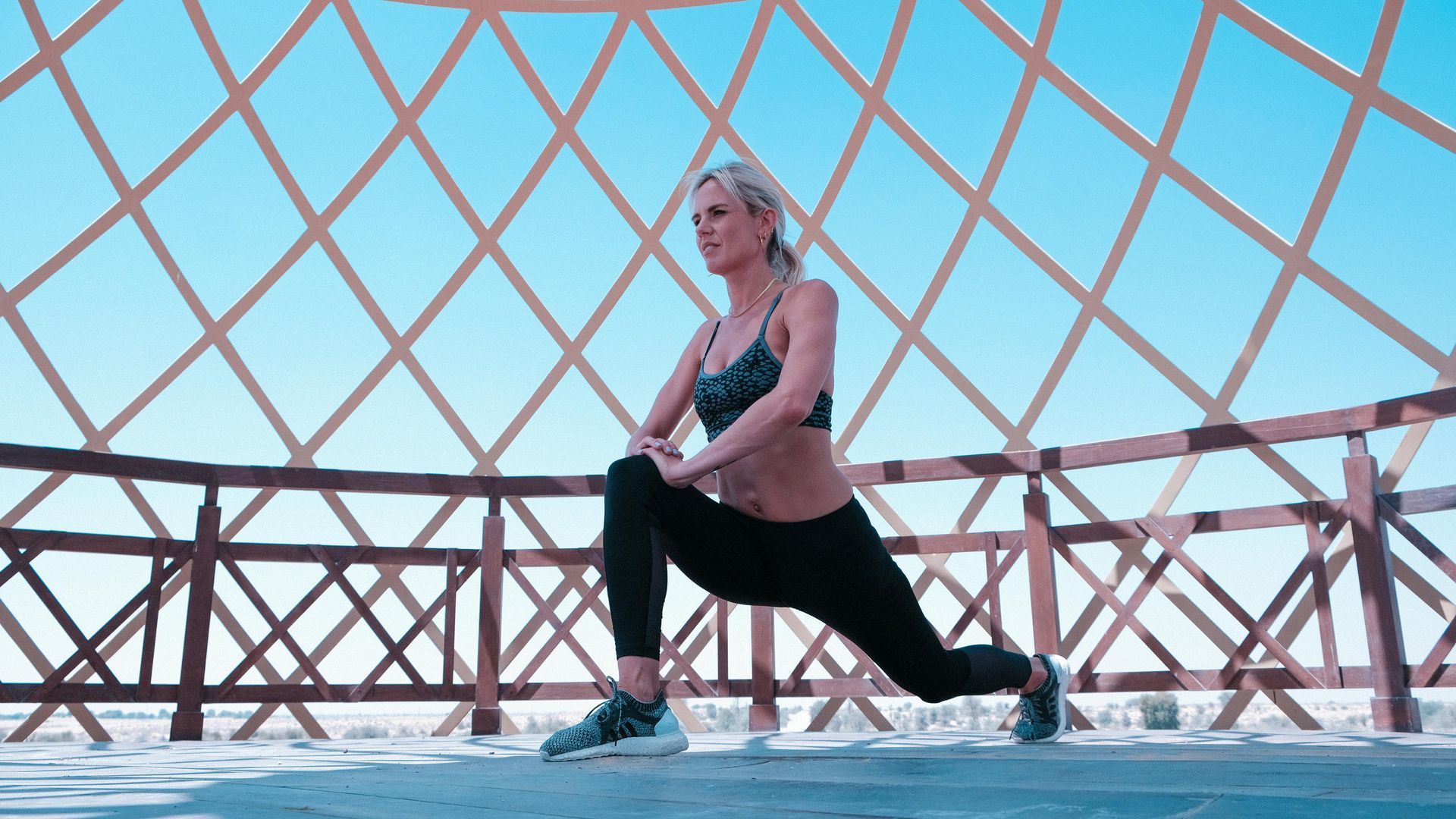Blog

December 16, 2025
The winter months in Rochester, NY, are beautiful, but the inevitable ice and snow dramatically increase the risk of slips and falls. At Agapé Physical Therapy , we believe your best defense against these hazards is a proactive, personalized treatment plan. With seven convenient locations across the Greater Rochester area, including our newest facility in East Rochester , our expert Doctors of Physical Therapy are here to help you stay strong, balanced, and independent all season long. Why Fall Prevention is Vital (Especially on Icy Days) Falls are a leading cause of injury, and the slick surfaces of a Rochester winter significantly compound this risk. Effective physical therapy works by training your body to respond quickly to loss of balance. Our specialized programs address the root causes of instability, ensuring you have the strength, reaction time, and confidence to navigate the outdoors—and the indoors—safely. We also dedicate time to teaching you safe techniques for getting up off the floor or ground, giving you the essential skill and confidence needed for self-rescue should a fall occur . Your Personalized Winter PT Toolkit at Agapé Agapé Physical Therapy offers a unique blend of high-tech and specialized services designed to target winter-specific mobility challenges: 1. Advanced Balance and Vestibular Rehabilitation If you experience dizziness, vertigo, or unsteadiness, a slippery environment is a major threat. Our specialized Vestibular Rehab program addresses inner ear issues and works to recalibrate your balance system, making your movements steadier and more predictable. This highly focused treatment significantly reduces your risk of injury both inside and out. 2. Training with the AlterG® Anti-Gravity Treadmill We are proud to offer the AlterG® Anti-Gravity Treadmill at six of our Rochester-area locations (excluding the newest East Rochester clinic for now). This innovative technology uses air pressure to safely reduce your body weight by up to 80%. Winter Benefit : It allows you to practice walking and jogging mechanics—essential for recovering from a slip—without the fear of falling or the impact stress on sensitive joints. It's the perfect way to build strength and confidence, even on the iciest days. 3. Low-Impact Strength in the Pool: Aquatic Therapy Stiffness and joint pain worsen in cold weather. Our dedicated Aquatic Therapy programs offer a warm, therapeutic environment to strengthen muscles and improve range of motion. The natural buoyancy of water protects joints while providing resistance, making it an ideal, slip-free activity to prepare your body for navigating difficult terrain. We have aquatic therapy available in Brockport, Gates, Penfield, and Webster. 4. Customized Strength and Stretching Programs Strong muscles are your best defense against a fall. Our therapists develop personalized stretching programs to combat winter stiffness and strength training programs focused on your core, hips, and ankles—the primary stabilizers needed to recover from a slip. 🏠 Winter Safety Tips from Your Local Agapé DPTs While you work through your prescribed therapy, remember these simple tips for staying safe in Rochester this season: Walk Like a Penguin : Take short, slow, shuffling steps to keep your center of gravity over your feet. Check Your Footwear : Invest in winter boots with aggressive, non-slip rubber treads. Hands-Free for Balance : Keep your hands out of your pockets to use your arms for quick balance corrections. Don't let winter weather put your mobility on ice. Call any of our seven Rochester locations today to schedule an evaluation and start your customized fall prevention and winter wellness plan with Agapé Physical Therapy .

November 25, 2025
If you've been experiencing dizziness, a spinning sensation (vertigo), or unsteadiness , you know how disruptive it can be. At Agapé Physical Therapy, we specialize in diagnosing and treating these complex vestibular issues. A comprehensive vestibular evaluation is the critical first step on your journey back to balance . Here’s a look at what goes into our thorough evaluation, designed to pinpoint the root cause of your symptoms: 1. Subjective History Your Story Matters The evaluation begins by listening to you. We gather detailed information about: Onset : When and how your symptoms started (sudden vs. gradual). Medical History : A review of your past self-history (including migraines, inner ear issues, head/neck injuries, or flu/virus history) and current medications, especially those for symptom management like Meclizine. Symptom Characteristics : We assess current symptoms like vertigo, nausea, lightheadedness, and falls, determining if they are continuous or occur in spells. Triggers : We specifically explore positional symptoms (e.g., when lying down, sitting up, or rolling over) and motion intolerance (e.g., car sickness or difficulty in visually busy environments like store aisles). Auditory Symptoms : We check for associated symptoms like hearing loss, tinnitus, or aural fullness, as these can point to specific inner ear conditions. 2. Objective Exam Testing Your System After the interview, we perform a hands-on assessment to observe how your body and senses are interacting. This includes: General Screen : Assessment of range of motion (ROM) and muscle strength (MMT) in your upper and lower extremities, along with a check of cervical (neck) motion. Balance Testing : Using validated clinical measures like Single Leg Stance (SLS) on firm and foam surfaces, Timed Up and Go (TUG), 5x Sit to Stand (5xSTS), and the Functional Gait Assessment (FGA/DGI) . These tests help us understand how your balance is compromised and what sensory systems (vision, inner ear, body position) you may be over-relying on. Oculomotor Testing : We meticulously evaluate your eye movements, as the inner ear directly influences vision stability. This includes checking: Ocular Mobility and Smooth Pursuits Saccades (quick eye movements) Gaze Evoked Nystagmus Head Thrust Test (a key measure for vestibular function) Positional Testing : A crucial part of the exam, where we use movements like the Dix-Hallpike and Horizontal Roll tests to determine if you have Benign Paroxysmal Positional Vertigo (BPPV) —the most common cause of vertigo—and identify which ear and canal are affected. Get Relief for Vertigo and BPPV Today! You don’t have to live with dizziness and balance issues. At Agapé Physical Therapy, we specialize in the effective diagnosis and treatment of BPPV and vertigo . Our expert therapists use the information from this detailed evaluation to create a personalized treatment plan for you. We are proud to serve the community with 6 convenient locations and our new 7th location in East Rochester ! Take the first step toward a steady, symptom-free life. Schedule your evaluation today at agapephysicaltherapy.com .

November 6, 2025
As the year winds down, it's the perfect time to take stock of your health and financial benefits. If you've been putting off addressing those nagging aches or are looking to jumpstart your fitness goals, now is the ideal moment to utilize your physical therapy coverage! The Year-End Advantage Maximize Your Deductible and HSA/FSA By November, many people have met their annual health insurance deductible. This is a game changer for utilizing physical therapy! When your deductible is met, your insurance coverage kicks in fully, meaning your out of pocket costs for physical therapy visits are often significantly reduced, or even eliminated. Don't let this financial opportunity slip away! Furthermore, if you contribute to a Health Savings Account (HSA) or Flexible Spending Account (FSA), be aware of your balance and expiration rules. Many FSA funds, in particular, operate on a "use it or lose it" basis and expire on December 31st. Physical therapy is a qualified medical expense, making it a smart way to invest that money back into your health before the deadline. Schedule those sessions now to make the most of your pre tax dollars! Direct Access Skip the Wait, Start Treatment Now Did you know that in New York State, you don't always need a physician referral to start physical therapy? Thanks to Direct Access, you can see a licensed physical therapist for an initial evaluation and treatment for up to 30 days without a physician’s referral. This means you can bypass the time and hassle of scheduling a doctor's appointment first. Get in and start feeling better sooner! More Than Just Injuries Reasons to Book Your Appointment Physical therapy isn't just for recovering from major surgery or severe injuries. It's a proactive tool for overall wellness and pain management. Here are a few great reasons to get started now: Banish Those Aches and Pains : Did overdoing it this summer leave you with a sore back, shoulder pain, or knee stiffness? Let's address those chronic discomforts before they worsen. Jumpstart Your New Year's Fitness Goals : Why wait until January 1st? Physical therapy can assess movement imbalances, strengthen foundational muscles, and provide you with a safe, customized plan to prevent injury once you hit the gym. Improve Holiday Mobility and Function : Ensure you can comfortably manage all the hustle and bustle of the holiday season—from standing for long periods to traveling, lifting, and carrying gifts. Improved mobility means you can enjoy the holidays to the fullest! Our Local Commitment: Seven Rochester Locations and Advanced Amenities at Agapé Physical Therapy We are dedicated to serving the greater Rochester community with seven convenient locations , ensuring quality care is always nearby: Brockport Chili East Rochester Gates Greece Penfield Webster Specialized Facilities to Enhance Your Recovery We invest in cutting-edge equipment to provide the best possible outcomes for our patients: Aquatic Therapy : We have pools available at four of our locations, perfect for low-impact exercises and therapeutic movement. Anti-Gravity Treadmills : Experience reduced weight-bearing exercise! We offer anti-gravity treadmills at every single one of our locations, allowing you to walk or run while reducing stress on your joints. Fitness Classes for Continued Wellness Beyond physical therapy, we believe in supporting your long-term fitness. We offer various fitness classes at local recreation centers conveniently located near our Brockport, Chili, Gates, and Webster offices. These classes are a great way to maintain the progress you've made in therapy and continue your wellness journey. Ready to maximize your benefits and start feeling your best? Contact our office today to schedule your appointment and inquire about utilizing your remaining benefits or to get more information on our fitness class offerings!

October 17, 2025
October is National Physical Therapy Month, and at Agapé Physical Therapy , we're celebrating the power of movement and healing! With seven convenient locations across Rochester, we are dedicated to serving our communities and helping you achieve your recovery goals. At Agapé Physical Therapy, we believe in providing the best possible care, tailored to your unique needs. We offer a wide range of specialized treatments and state-of-the-art equipment to help you on your healing journey: Advanced Equipment : All six of our locations are equipped with antigravity treadmills , and four of our locations also feature therapeutic pools , offering innovative ways to support your rehabilitation. We also have a C- Mill Treadmill in Chili and golf simulators in Chili and Brockport. Orthopedic Expertise : Whether you're preparing for surgery or recovering afterward, our team specializes in orthopedics, helping you regain strength, mobility, and function. Spine Care : For those experiencing cervical, thoracic, or lumbar spine pathology, our dedicated team offers thorough evaluations and effective treatments. We're committed to helping you restore movement, build vital core strength, and optimize spinal function after injury. Our highly trained doctors of physical therapy, many of whom are primary spine providers, deliver exceptional, specialized care. Vestibular and Neurological Care : We provide comprehensive treatment for vestibular conditions like concussions and BPPV, as well as neurological conditions such as Parkinson’s, post-stroke recovery, and Functional Neurological Disorder (FND). TMJ Disorder Treatment : We also treat Temporomandibular Joint Disorder (TMD) and collaborate with local physicians to ensure you receive the most comprehensive care. Get Started on Your Healing Journey – No Referral Needed! We understand that starting your healing process quickly is important. That's why you don't need a doctor's referral for your first visit! You can be seen by a physical therapist for up to 30 days before needing a referral. We can usually get you scheduled for an evaluation within about one week, so you can begin your recovery without delay. We are incredibly grateful for the patients who choose Agapé Physical Therapy for their recovery needs, and we hope you'll choose us too! Let us help you move better, feel better, and live better this National Physical Therapy Month and beyond.

By The Admin Team
•
September 29, 2025
The road back from a major injury or surgery can be daunting. Every step feels heavy, and the fear of pain or re-injury often holds you back from the movement your body needs to heal. What if you could immediately cut your body weight by up to 80% and start walking or running pain-free ? At Agapé Physical Therapy , we have technology typically reserved for elite athletes and space training right in our clinics. We're talking about the Anti-Gravity Treadmill (Alter-G) — a revolutionary tool that is fundamentally changing how our patients recover and return to peak performance. What is an Anti-Gravity Treadmill? Imagine stepping into a bubble where you can instantly control the force of gravity on your body. That's essentially what the Alter-G treadmill does. Developed using NASA differential air pressure technology, this specialized treadmill allows us to precisely unweight you, reducing the amount of body weight you bear while walking or running. You wear specialized shorts that zip into an airtight chamber that surrounds the treadmill. By subtly changing the air pressure within that chamber, we can lift you, reducing the impact on your joints and muscles to as little as 20% of your actual weight. This means a 200-pound patient could start walking feeling like they weigh only 40 pounds! The Physics of Pain-Free Rehabilitation The magic of the Anti-Gravity Treadmill lies in its precision and control. Unlike water-based therapy, which provides buoyancy but is difficult to measure, the Alter-G allows our Doctors of Physical Therapy to dial in the exact percentage of weight bearing you need, in 1% increments. Key Benefits for Your Recovery: Early and Safe Mobility : After surgery (like a knee replacement or ACL repair), the biggest hurdle is getting movement without damaging new tissue. The Alter-G lets you initiate your gait cycle much earlier, promoting tissue healing, reducing swelling, and maintaining joint range of motion—all before you are cleared for full weight-bearing. Immediate Pain Reduction : If pain is keeping you from walking properly, the reduced gravity allows you to move freely without impact. This break in the pain cycle is crucial for confidence and correcting compensations. Perfect Gait Retraining : Walking with a limp for months can create bad habits that persist long after the initial injury heals. The controlled environment of the Alter-G allows our therapists to observe and correct your natural walking or running mechanics right away, helping you restore a symmetrical, normal gait faster. Maintain Cardiovascular Fitness : Athletes recovering from a lower-body injury often struggle with losing fitness. The Anti-Gravity Treadmill enables you to log miles and keep your heart and lungs conditioned at your actual running pace, even when your injured joint isn't ready for impact. Who Can Benefit from Training with Reduced Gravity? The Alter-G isn't just for recovering runners; it's a powerful tool for a diverse range of conditions and recovery goals: Post-Surgical Patients : Individuals recovering from hip, knee, ankle, or foot surgery can begin functional weight-bearing much sooner than traditional protocols allow. Endurance Athletes & Runners : Athletes can continue high-volume training with less strain on their joints, using the Alter-G for "active recovery" runs or for safely building mileage after a stress fracture or tendonitis. Fall Prevention & Balance Training : For older adults or those with neurological conditions or poor vision, the treadmill provides a safe, fall-protected environment to practice walking and balance without the fear of hitting the ground. Chronic Pain Management : Patients with severe arthritis or chronic joint pain can exercise aerobically and strengthen muscles without exacerbating their condition. Ready to Accelerate Your Recovery? Your body is capable of incredible things, and with the right tools, we can unlock its full potential. The Anti-Gravity Treadmill is just one example of how Agapé Physical Therapy is committed to providing the most advanced, personalized care available. We're here to help you move better, feel better, and get back to the life and activities you love, faster. We offer Anti-Gravity Alter-G treadmills at our Brockport , Gates , Greece , Chili , Webster , and Penfield locations. Contact us today to schedule your initial evaluation and discuss how we can incorporate anti-gravity training into your personalized recovery plan!

August 11, 2025
Vacations are a time for relaxation, adventure, and making memories. However, they can also come with unexpected aches and pains, especially after long flights, car rides, or days spent exploring. The key to a more enjoyable and comfortable getaway? Stretching! Have you ever heard the saying, “I need a vacation from my vacation.”? Well, here are some ways to help you avoid that post vacation slump. Why Stretching is Your Vacation MVP Making time for stretching on your vacation might seem counterintuitive when you're trying to pack in all the fun, but it's a game changer for several reasons: Alleviate Travel Aches and Pains : Prolonged sitting during travel can lead to stiffness in your neck, shoulders, back, and hips. Regular stretching helps to increase blood flow, reduce muscle tension, and prevent those uncomfortable travel induced pains from setting in. Improve Mobility and Flexibility : Whether you're hiking a new trail, exploring new restaurants, or simply walking around a new city, good mobility is essential. Stretching keeps your muscles limber, allowing you to move more freely and confidently. Boost Energy Levels : Stiffness and muscle fatigue can drain your energy. A few minutes of stretching can invigorate your body, making you feel more refreshed and ready for your next adventure. Enhance Relaxation : Stretching is not just good for your body; it's also beneficial for your mind. It can help reduce stress and promote a sense of calm, allowing you to truly unwind and enjoy your time off. Prevent Injuries : When your muscles are tight, they are more susceptible to injury. Gentle stretching can help prepare your body for various vacation activities, from swimming to sightseeing. How to Fit Stretching into Your Vacation Schedule Integrating stretching into your vacation doesn't require a full yoga session. Even short, consistent efforts can make a big difference. You can even find short YouTube videos to help guide you through a few stretches: Before and After Travel : Take 5-10 minutes to stretch before and after your flight or long drive. Focus on areas like your neck, shoulders, and hamstrings. Morning Wake-Up : Start each day with a gentle full-body stretch. It's a great way to wake up your muscles and prepare for the day's activities. During Downtime : Waiting for a bus? Taking a break from sightseeing? Use these moments for a quick stretch. Before Bed: A few minutes of stretching before sleep can help relax your muscles and improve the quality of your rest. Here are some easy stretches to add to your travel routine: 1. Standing Hip Flexor Stretch: While standing, slide one foot back and bend the front knee. Lean back slightly and feel a stretch in the front of your front hip as well as a calf stretch in the back leg. Hold for 30 seconds, then switch legs. Do about 3 reps.

July 15, 2025
In the world of physical therapy , much like life itself, we often seek immediate results. We put in the work, follow our exercises, and attend our appointments, all with the hope of seeing tangible progress quickly. Yet, sometimes, the path to recovery can feel slow, even stagnant. It's during these challenging moments that the "Bamboo Principle" truly shines as a beacon of encouragement and a powerful metaphor for delayed gratification in physical therapy. Understanding the Bamboo Principle Imagine the journey of a bamboo plant. For the first four years after planting, you might see very little above ground – perhaps just a small, unassuming sprout. During this time, it seems as though all the effort of planting and tending to the soil yields minimal visible reward. However, beneath the surface, a remarkable transformation is occurring. The bamboo is quietly and diligently developing a strong, intricate root system. These roots are deepening, strengthening, and preparing the plant for the incredible growth spurt that is to come. Then, almost miraculously, after years of seemingly unremarkable progress, the bamboo plant can suddenly shoot upwards, growing an astonishing 90 feet in just a few weeks. This rapid, visible growth is a direct result of the unseen, foundational work that took place during those initial four years. Applying the Principle to Your Physical Therapy Journey The Bamboo Principle is a powerful analogy for physical therapy because it perfectly encapsulates the idea of delayed gratification. When you embark on a physical therapy journey, you are essentially planting your own seeds of recovery. You are putting in the hard work, consistently performing your exercises, and dedicating yourself to the process. It's natural to want to see immediate improvements. You might hope for significant pain reduction after just a few sessions, or a dramatic increase in your range of motion within weeks. However, much like the bamboo, your body needs time to build its own "root system" for recovery. This foundational work involves strengthening muscles, improving joint stability, retraining movement patterns, and reducing inflammation – many of which are internal processes that aren't always immediately visible. There will be days when you feel discouraged. You might experience plateaus in your progress, or even minor setbacks. It can feel like you're putting in all this effort with little to show for it. This is precisely when the Bamboo Principle is most vital: keep going! The Importance of Consistency and Persistence Consistency is the cornerstone of the Bamboo Principle in physical therapy. Showing up for your appointments, diligently performing your home exercise program, and maintaining a positive mindset are all crucial components of laying that strong foundation. Each repetition, each stretch, each focused movement contributes to the unseen growth within your body. Think of it as nurturing your personal bamboo plant. Even when the visible sprout is small, you wouldn't stop watering it or providing it with sunlight. You would continue to care for it, trusting that the essential work is happening beneath the surface. Similarly, in physical therapy, continuing to put in the work, even when it feels tough and progress seems slow, is what allows your body to build the strength and resilience needed for a breakthrough. Agape Physical Therapy: Your Partner in Building a Strong Foundation At Agapé Physical Therapy , we deeply understand the Bamboo Principle. Our vision is to help you move better and feel better, and we are dedicated to guiding you through every stage of your recovery, wellness, and performance journey. We know that the path isn't always linear, and that setbacks can be disheartening. That's why we're committed to helping you lay that crucial foundation, helping your roots deepen, and providing unwavering encouragement to keep you going. We believe in the power of consistent, dedicated effort, and we’re here to ensure that your efforts yield profound and lasting results. Even when it seems hopeless, remember that you may just need more time before you witness the significant progress you've been working towards. Our Approach to Your Recovery Our team of dedicated Doctors of Physical Therapy at our seven Rochester locations are experts in their field, ready to provide personalized care and support. We don't just focus on the immediate symptoms; we work with you to address the root causes of your discomfort and limitations, helping you build a resilient and functional body. We will help you: Set that foundation : Through comprehensive assessments and individualized treatment plans, we identify your specific needs and create a roadmap for your recovery. Help your roots deepen : Our therapeutic exercises and hands-on techniques are designed to strengthen your body from the inside out, building stability, flexibility, and endurance. Stay encouraged to keep going : We provide a supportive and motivating environment, celebrating every small victory and offering guidance through any challenges. Get Back to Doing What You Love Don't let temporary plateaus or the appearance of slow progress deter you from achieving your goals. Just like the bamboo, your consistent effort will eventually lead to remarkable growth and a return to the activities you love. We are passionate about helping you get back to living your life to the fullest. Ready to plant your seeds of recovery and watch your "bamboo" flourish? Let us help you on your journey. Schedule your appointment today.

June 13, 2025
Summer is here, and with it comes longer days, warmer weather, and the perfect opportunity to hit the pavement! If you're eyeing a 5K race or simply want to enjoy pain-free running throughout the season, this blog post is for you. We'll dive into common runner's pitfalls and equip you with the knowledge and exercises to strengthen your body and keep injuries at bay. The Pain-Free 5K: More Than Just Mileage Many runners focus solely on increasing their mileage, but true pain-free running comes from a balanced approach. Often, nagging aches and pains (especially in the hips, knees, and lower back) can be traced back to imbalances in core strength, glute activation, and hip flexibility. Think of your body as a kinetic chain. If one link is weak or tight, it can put undue stress on other areas. For runners, two key areas often need attention: Tight Hip Flexors : Sitting for extended periods (common in our modern lifestyles) can shorten and tighten your hip flexors, limiting your stride and pulling on your pelvis, leading to lower back pain or even knee issues. Weak Glutes and Core : Your glutes are your primary powerhouses for propulsion and stabilization during running. A weak core means less stability for your trunk and pelvis, leading to inefficient movement and increased risk of injury. Top Exercises for a Pain-Free Stride Let's get down to business! Incorporate these exercises into your routine 2-3 times a week to unlock a stronger, more efficient, and pain-free running experience. For Hip Flexor Stretching: Release the Tension!: 1. Kneeling Hip Flexor Stretch: Kneel on one knee (use a pad if needed) with your other foot flat on the ground in front of you, forming a 90-degree angle at both knees. Gently push your hips forward until you feel a stretch in the front of your hip and thigh of the kneeling leg. Keep your core engaged and avoid arching your lower back. Hold for 30 seconds, repeat 3 times per side.

June 6, 2025
Recovering from lower body surgery often involves using mobility aids like crutches. While they provide essential support, improper usage can lead to complications, including radial nerve palsy. Let's delve into the importance of correct crutch usage for a smooth recovery. Understanding Radial Nerve Palsy Radial nerve palsy occurs when the radial nerve, which runs down the arm and controls movement and sensation in the hand and wrist, is damaged. One potential cause is incorrect crutch usage, specifically placing weight directly under the armpit, compressing the nerve. This can lead to symptoms such as wrist drop (inability to extend the wrist), difficulty gripping, and numbness or tingling in the hand. Healing from radial nerve palsy can take up to 4 months, impacting daily activities and prolonging recovery. The Correct Way to Use Crutches Single Crutch Usage The proper way to use a single crutch is on the opposite side of the injured leg. This provides better balance and support. For example, if your right leg is injured, use the crutch in your left hand. Two Crutches Usage Using two crutches is generally the preferred method for post-surgical support until you can fully weight bear. This distributes weight more evenly, reducing strain on the non-injured side and minimizing the risk of nerve damage. Switching to a Cane Once you have regained sufficient strength and balance, you might transition to a cane for single-side usage. It's crucial to use the cane on the opposite side of the injured leg, similar to a single crutch. The Importance of Professional Guidance Physical Therapist Evaluation It is highly recommended to be evaluated by a physical therapist when transitioning between devices. A physical therapist can: Assess your gait and weight-bearing capacity. Ensure you are using the device correctly. Provide personalized guidance and exercises for recovery. Minimize the risk of complications like radial nerve palsy. Benefits of Physical Therapy Proper gait training . Strengthening exercises . Balance improvement . Agapé Physical Therapy: Your Recovery Partner Agapé Physical Therapy has 7 Rochester locations to assist with your gait training needs. We specialize in helping you recover with crutches, walkers, canes, and other devices without causing unnecessary additional injuries. Services Offered Gait analysis and training using our Anti-Gravity Alter-G treadmills or Aquatic Treadmills in Brockport , Gates , Webster , and Penfield Strength and conditioning at all our locations Pain management with Game Ready ice and compression machines Personalized recovery plans from our highly trained Doctors of Physical Therapy Schedule your first visit today at agapephysicaltherapy.com Key Takeaways Proper crutch usage is essential to prevent complications like radial nerve palsy. Use a single crutch on the opposite side of the injured leg. Using two crutches is preferred until full weight-bearing is achieved. Consult a physical therapist for guidance when switching mobility aids. Agapé Physical Therapy provides comprehensive gait training services at 7 Rochester locations! Remember, your recovery journey is unique. Prioritize proper technique and professional advice for a smooth and safe healing process!

May 29, 2025
Don't let pain steal the joy of your garden this season! Remember the satisfaction of nurturing life, the vibrant colors, the fresh scents? But if bending, lifting, or even just being on your feet has become a painful chore, it's time to reclaim your passion. If you've been sidelined from your gardening passion, Agapé Physical Therapy can help you regain your strength and flexibility so you can get back to those summer activities you love. Common Gardening Movements and Their Challenges Gardening, while enjoyable, can put stress on various parts of the body. Here are some common movements and potential challenges: Squatting : Essential for planting and weeding, but can strain knees and hips. Bending : Necessary for reaching low areas, which can irritate a prior back injury. Lifting : Moving pots, bags of soil, or tools can lead to shoulder pain if not done properly. Twisting : Reaching different areas of the garden can put stress on the spine. Pulling : Weeding or moving debris can strain muscles in the arms and back. How Agapé Physical Therapy Can Help Agapé Physical Therapy offers tailored programs at 6 Rochester locations to address these challenges and help you garden safely and comfortably. Strength Training We'll develop a program to strengthen key muscle groups used in gardening, such as: Quads, hamstrings, and glutes for squatting Core muscles for stability and bending Arms and shoulders for lifting and pulling Flexibility and Stretching Improve your range of motion and reduce stiffness with: Targeted stretches for the back, hips, and shoulders including forward bending and overhead reaching. Exercises to enhance overall flexibility Injury Prevention Learn techniques to: Properly lift heavy objects Maintain good posture while gardening Avoid repetitive strain injuries Personalized Plans Every individual is unique, so we'll create a plan that fits your specific needs and limitations. Get Back to Enjoying Your Garden With the support of Agapé Physical Therapy, you can overcome physical barriers and fully enjoy the many benefits of gardening this summer. Whether you're planting flowers, growing vegetables, or simply tending to your yard, we're here to help you stay active and healthy. Contact Agapé Physical Therapy today to schedule a consultation and start your journey back to your garden!
